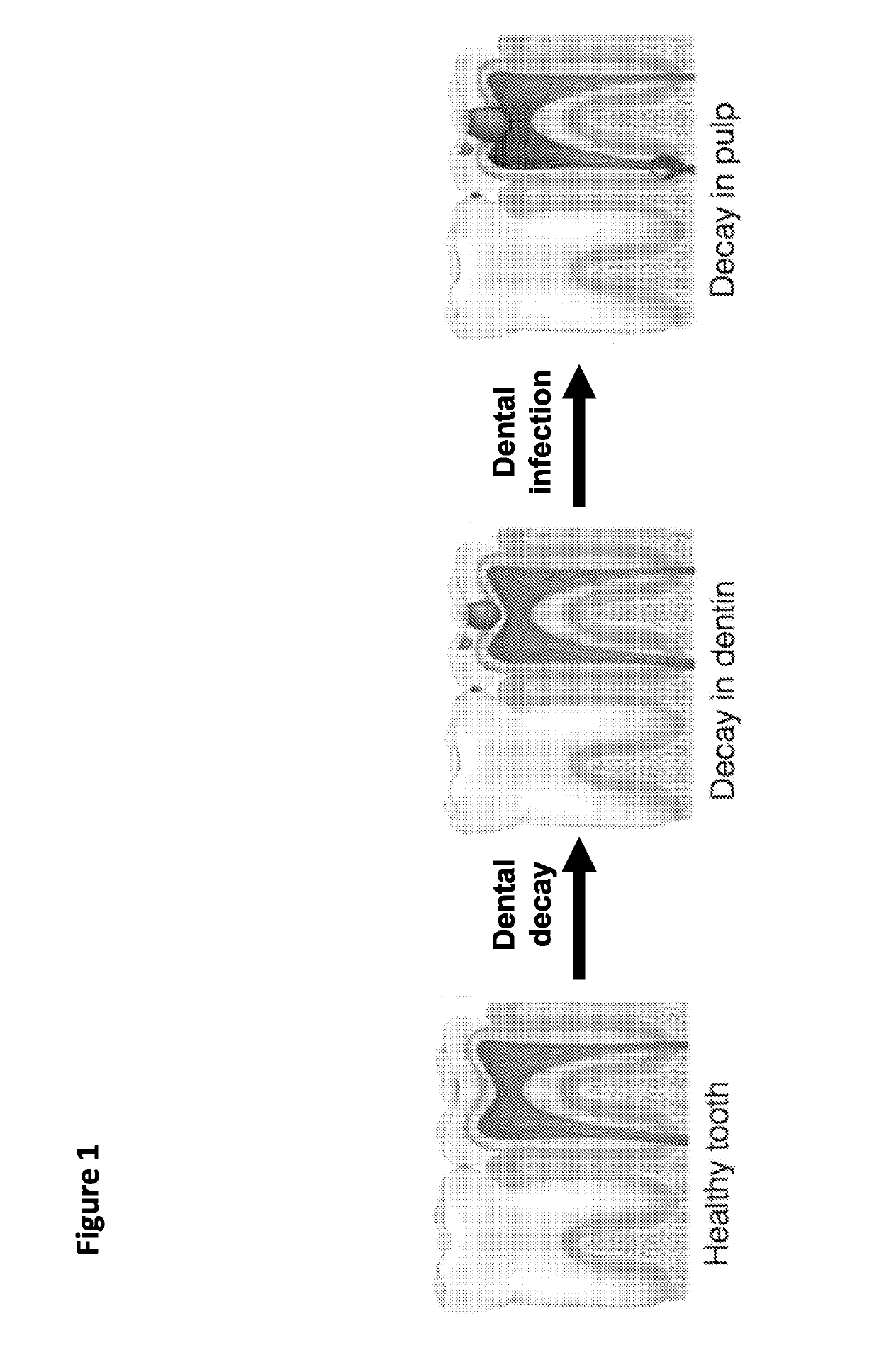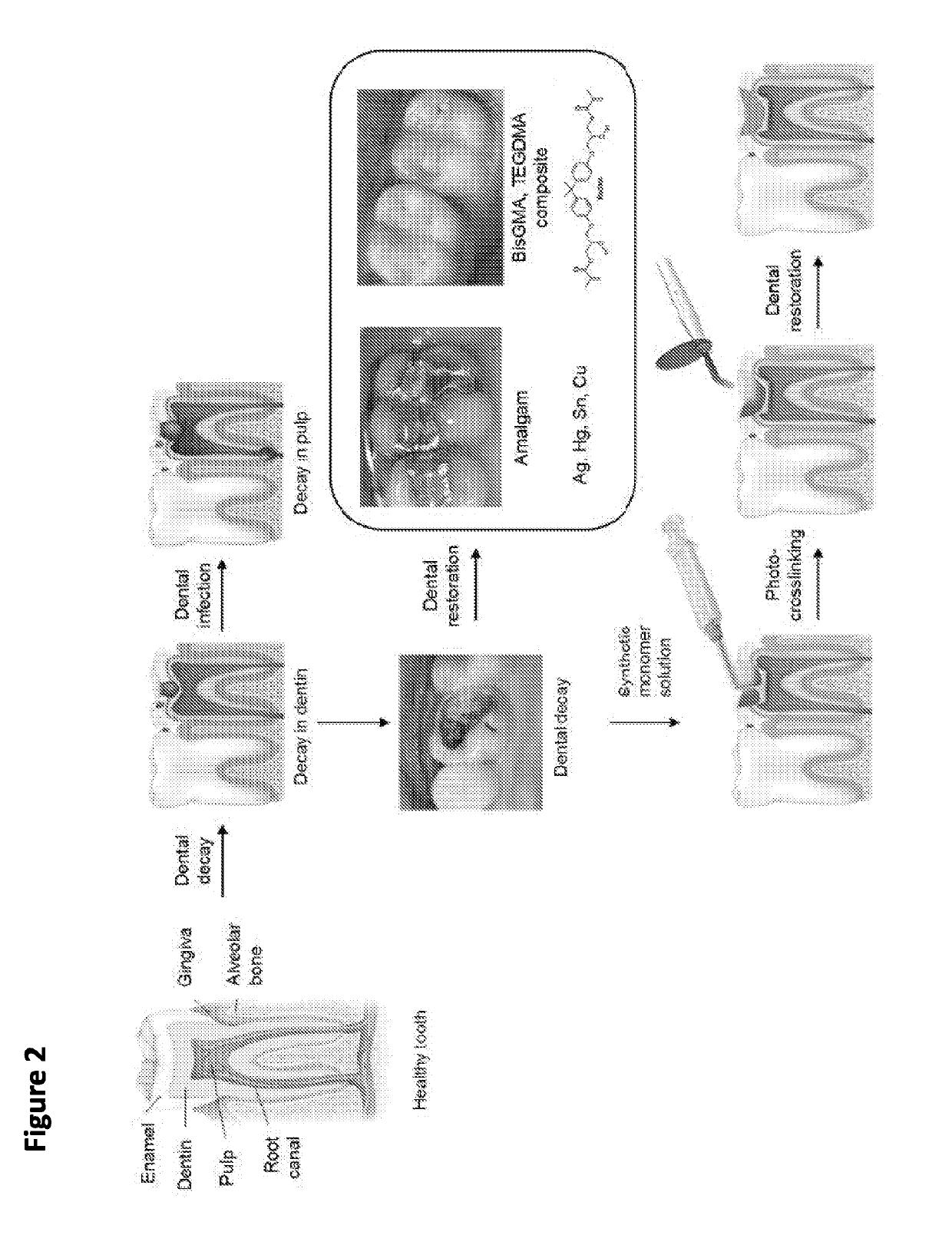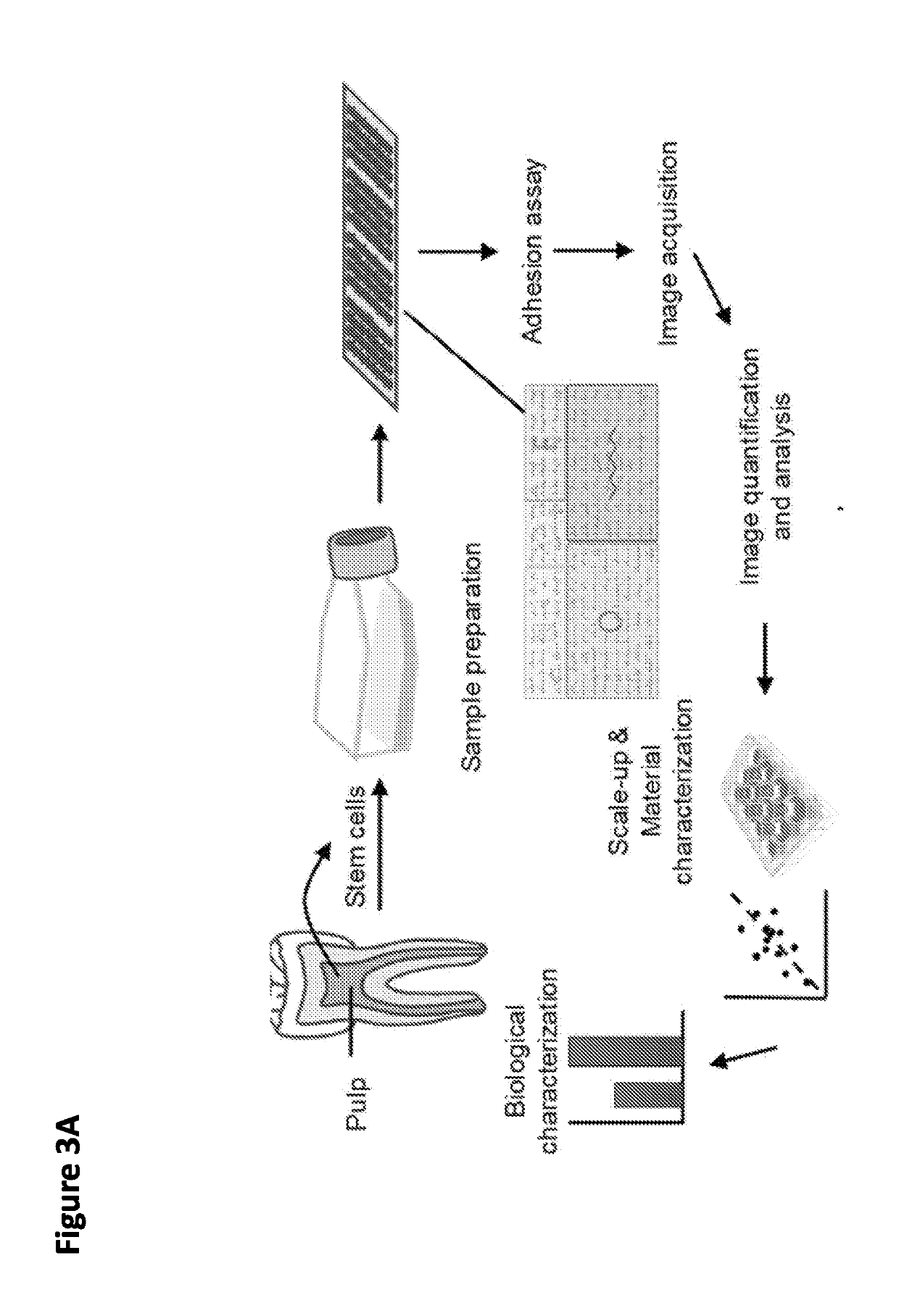Methods and compositions for dental tissue repair and/or regeneration
a technology of dental tissue and composition, which is applied in the field of dental tissue repair and/or regeneration, can solve the problems of dentin and dental pulp irreversible damage, affecting the quality of life of patients, and still a major oral health problem, so as to promote dentin and/or dental pulp repair and/or regeneration, improve dental treatment, and preserve the vitality of teeth
- Summary
- Abstract
- Description
- Claims
- Application Information
AI Technical Summary
Benefits of technology
Problems solved by technology
Method used
Image
Examples
example 1
ughput Polymer Screen Using Polymer Microarrays
[0293]Polymer microarray allows simultaneous screening of diverse polymer chemistries to propel material discovery for biological applications. In order to identify novel biomaterials for improving dental treatment, a high-through screen polymer screen was performed using polymer microarrays (Anderson, D G et al., 2004, Nature Biotechnology 22, 863-866; Mei, Y et al., 2010, Nature Materials 9, 768-778; Celiz, A D, et al., 2015, Advanced Materials doi:10.1002 / adma.201501351). DPSCs were procured from human donor teeth and expanded in tissue culture to be used in the experimental workflow, which involved screening, scaling up the materials to cell culture substrates, materials characterization, and biological characterization (FIG. 3A).
[0294]Briefly, 119 commercially available monomers of 250-400 μm diameter were printed and photo-polymerized on polyHEMA coated slides in microarrays (University of Nottingham), with six replicates per arra...
example 2
ere to Triacrylate Polymers and Proliferate in a J-Dependent Manner
[0299]Subsequently, polymers AT03 (trimethylolpropane triacrylate) and AT06 (pentaerythritol triacrylate) were scaled up into 12-well plates for further testing on DPSC adhesion, proliferation and differentiation in vitro.
[0300]DPSCs were seeded at a density of 75,000 cells / cm2 onto 12-well plates coated with polymers or tissue culture plastic control in serum-free conditions (alpha MEM with ascorbic acid and penicillin / streptomycin). Cells were adhered for 48 hours and imaged with phase contrast microscopy (FIG. 10A).
[0301]In order to determine the cell count and viability, plates were washed thoroughly with HBSS to remove non-adhered cells. Subsequently, cells were obtained from the surface by treatment of trypsin / EDTA for 5 minutes, followed by staining with Trypan blue and cell counting with the Countess Cell counter (Thermo). As demonstrated by FIGS. 10B and 10C, no statistically significant difference in cell c...
example 3
Culture and Differentiation of DPSCs on AT03 and AT06
[0305]To assess the ability of AT03 (trimethylolpropane triacrylate) and AT06 (pentaerythritol triacrylate) for supporting long-term cell culture and promoting DPSC differentiation, cells were treated with polymer coated plates for 21 days. Briefly, DPSCs were seeded at a density of 75,000 cells / cm2 onto 12-well plates coated with polymers and TCP control in serum-free conditions (alpha MEM with ascorbic acid and penicillin / streptomycin). Media was changed every 2-3 days. Cells were imaged with phase contrast microscopy (FIG. 11A).
[0306]In order to determine the differentiation states of DPSCs, gene expression levels of several differentiation markers were measured by quantitative PCR. Cells were lysed for collecting RNA in RNA lysis buffer with 1% 2-mercaptoethanol to isolated RNA (PureLink RNA Micro Scale Kit, Thermo Scientific). RNA was quantified by NanoDrop spectrophotometer. Subsequently, cDNA was reverse transcribed by iScr...
PUM
| Property | Measurement | Unit |
|---|---|---|
| diameter | aaaaa | aaaaa |
| diameter | aaaaa | aaaaa |
| diameter | aaaaa | aaaaa |
Abstract
Description
Claims
Application Information
 Login to View More
Login to View More - R&D
- Intellectual Property
- Life Sciences
- Materials
- Tech Scout
- Unparalleled Data Quality
- Higher Quality Content
- 60% Fewer Hallucinations
Browse by: Latest US Patents, China's latest patents, Technical Efficacy Thesaurus, Application Domain, Technology Topic, Popular Technical Reports.
© 2025 PatSnap. All rights reserved.Legal|Privacy policy|Modern Slavery Act Transparency Statement|Sitemap|About US| Contact US: help@patsnap.com



